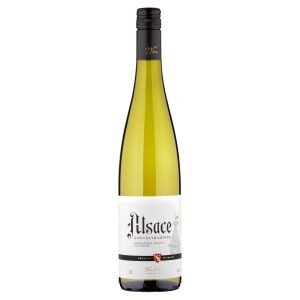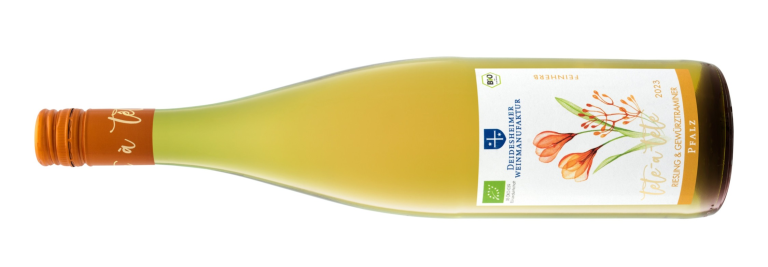After the recent shorter posts, today’s is a longer and mostly analytical piece.
The focus is a less on “what to buy” than on “why” – so MidWeekers get a few tips that should help them make their own decisions about what might be a sound purchase.
This time the theme is Burns Night (this Saturday) and draws on what I have discovered from many years “researching” pieces about the event for the Scottish press.
NB: “Sonsie” translates as “chubby or plump” – as the haggis will appear after being boiled in hot water (try it in a slow cooker) and becoming slightly inflated as a result.
First, then, the wine.
Counter-intuitively and despite the uncompromising meat content of haggis, my personal preference is to partner it with white wine.
My choice of which white wine may be even more startling – gewürztraminer.
With its iconic perfumed, spice and oriental fruit elements, gewürztraminer is a distinctive grape variety that can be the perfect partner for, say, Thai cuisine.
Although it often contains only low levels of acidity (often impairing its overall balance and zingy freshness) that does not appear an issue with haggis.
What really counts is the coming together of two common factors – spice and texture – which are plentiful in both the wine and the food.

My current top tip for an inexpensive addition to your Burns Night table is 2018 The Best Alsace Gewurztraminer (£8 at Morrisons and 13%) which combines touches of honey and oriental spices with mango and nectarine fruit supported by creamy substance that stops well short of an overpowering viscosity.
If you fancy something with a little more depth then the mellow apple and orange fruit of 2018 Taste the Difference Alsace Gewurztraminer (£9 at Sainsbury’s and 13.5%) may suit you better.
But what about red
Despite many valiant attempts, I have yet to find a red that works across all vintages – what dazzles as a flavour match one year often fails to do so the next.
Slightly off-beat regions can score well here though.

For instance, this year my best match was with Mexico’s 2016 L A Cetto Cabernet Sauvignon (£9.75 at www.woodwinters.com and 13.5%) with its firm acidity, blackberry and prune fruit that is reinforced by sweet spices, mint, mocha and graphite elements but limited tannin.
Last year, I favoured Lebanon’s Château Ksara Réserve du Couvent 2016 (£9.95 at www.thewinesociety.com) and 13.5%) which – duly decanted – provided wine with lovely herbal elderberry and sour cherry fruit, good acidity, firm tannin and ancillary suggestions of cocoa, black pepper and cola.
The Society has now moved on to the 2017 vintage but I am told that this is also a more than decent bottle.
Speaking more generally, Rhone reds – texture and spice again, as with the whites – hits more often than most but, again, a lot depends on the individual wine so avoid being too hard and fast on that.
Then there’s Scotland’s “Water of Life”
As for the Toast to the Haggis, here – I suggest – the challenge is avoiding either main component (whisky and haggis) overpowering the other.
For me, most successful alliances seem to avoid excessive smokiness or power but (to provide simultaneous harmony and contrast) contain elements of spice and sweetness – often courtesy of ex-sherry casks.
Several whiskies have worked for me in the past including Tamdhu 10 Year Old Speyside Single Malt and Jura Superstition but, for a great value option, head to Lidl.

Time in port, sherry and bourbon casks has added significant complexity to Abrachan Blended Malt Scotch Whisky (£17.49 at Lidl) that works well with the whisky’s hints of barley sugar sweetness and suggestions of clove, fudge and orange.
That is certainly my tip for those currently wary of pushing the financial boat too far from the shoreline.
One word of advice though, to enjoy its extensive flavour range to the full, add slightly less water to this than would normally be the case.
Chemists tell us that the controlled dilution of whisky brings certain key flavour enhancing molecules to the surface – and I normally use a 2:1 whisky to water ratio.
When aging in sherry casks is involved, though, rather less water seems to be needed – for a reason I cannot fathom but perhaps a chemist can help me out there too.
If you fancy something a little more assertive then another option could be Finest 12 Year Old Highland Single Malt Scotch Whisky (£25 at Tesco) with its creamy texture, fruity barley sugar and orange flavours and long finish (that also seems to have an edge of sweetness).
And for Beer
With its more extensive range of flavours and textures, beer often works even better with food than wine but, like wine, it is often best to partner local food with local beverages.
Demonstrating the truth of that maxim, it is an ale from an excellent Scottish brewer that is my choice for haggis.

With any maltiness delicately balanced by floral components, Williams Bros Fraoch Heather Ale (£1.49 for 500ml in Aldi’s Scottish stores and available in other supermarkets and the brewer) is a herby, slightly spicy ale with a background sweetness neatly wrapped in a smattering of heather.
If you have trouble finding that, here is a wild card choice that surprised me by working well with haggis too.
Based on American hops, BrewDog Vs Cloudwater IPA (£3 for 440ml at Tesco and a mighty 6.8% abv) is a cloudy IPA with gentle bitterness, soft grapefruit and tropical fruit flavours but a cereal background too.
In any event, if you do celebrate Burns Night, have a great time.
Back on Friday folks with another snapshot on what is drinking well when I provide the headline selections from the new Lidl Wine Tour that starts tomorrow.









2 responses
Really enjoyed that Brian. Thank you. Off to Lidl now for the Abrachan blend and to see if they have one of their haggis events as they usually do this time in January. Slainte ….
Thank you Eddie, glad the piece works for you – good luck with the haggis hunting.
Do keep providing feedback – it is helpful to hear what people enjoy (and what they don’t) especially about the frequency of posts (welcomed extra input or saturation point).